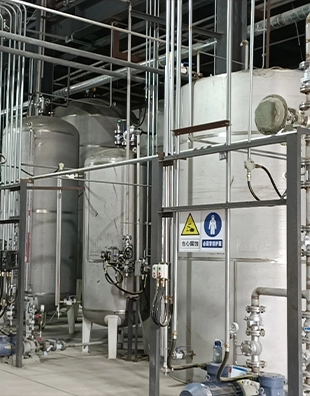chemical coagulation and flocculation water treatment
Chemical Coagulation and Flocculation in Water Treatment
Water is essential for life, yet accessing clean and safe drinking water remains a significant challenge in many parts of the world. Among the various water treatment processes, chemical coagulation and flocculation stand out as highly effective methods for removing suspended particles and impurities from water sources, ensuring that they meet safety standards. This article explores the principles, mechanisms, processes, and importance of chemical coagulation and flocculation in water treatment.
The Principles of Coagulation and Flocculation
Coagulation and flocculation are two interrelated processes that manage the removal of colloidal particles from water. Coagulation is the first step, where chemicals, known as coagulants, are added to the water. These chemicals neutralize the charges on suspended particles, which prevents them from repelling each other. Common coagulants include aluminum sulfate (alum), ferric sulfate, and polyaluminum chloride.
In the subsequent flocculation stage, gentle mixing occurs to encourage the destabilized particles to collide and form larger aggregates called flocs. This increase in size makes it easier to separate the particles from the water during the sedimentation or filtration stages. The flocs are then removed along with the trapped impurities, leaving behind clean water.
The Process of Coagulation and Flocculation
1. Pre-Treatment Before coagulation begins, the water is typically pre-treated to remove larger debris. This can involve screening or sedimentation processes.
2. Coagulation A coagulant is added to the water at a rapid mixing stage. The coagulant dissolves and begins to interact with the suspended particles, neutralizing their charges.
3. Flocculation The water is then subjected to slow mixing or stirring, promoting the aggregation of the particles into larger flocs. The mixing must be gentle to avoid breaking apart the forming flocs.
chemical coagulation and flocculation water treatment

4. Sedimentation The water is allowed to sit in a sedimentation tank, where gravity pulls the heavier flocs to the bottom, forming a sludge layer.
5. Filtration The clarified water at the top is then passed through filters to remove any remaining suspended solids.
6. Disinfection Finally, the treated water often undergoes disinfection, typically through chlorination or ultraviolet (UV) treatment, to ensure that any remaining pathogens are eliminated before human consumption.
Importance of Chemical Coagulation and Flocculation
Chemical coagulation and flocculation offer various advantages in water treatment. Primarily, they effectively reduce turbidity, which is a measure of the cloudiness of water caused by suspended solids. High turbidity can harbor pathogens and chemicals, making the water unsafe for consumption. By removing these particles, coagulation and flocculation enhance water clarity and safety.
Furthermore, this treatment method is versatile and can be adjusted based on the specific characteristics of the water source. Different coagulants and dosages can be used to optimize performance for varying conditions, such as pH levels and types of contaminants. This adaptability makes chemical coagulation and flocculation widely applicable in municipal water treatment plants, industrial processes, and even wastewater treatment.
In addition to improving water quality, effective coagulation and flocculation can provide economic benefits. By minimizing the size and volume of sludge produced during the treatment process, water treatment facilities can reduce disposal costs and enhance operational efficiency.
Conclusion
Chemical coagulation and flocculation are critical processes in ensuring the availability of clean and safe drinking water. Through the effective removal of suspended particles and impurities, these methods play an integral role in water treatment facilities around the world. As the demand for safe drinking water continues to grow, the importance of efficient and reliable water treatment processes, including coagulation and flocculation, will only increase. By investing in research and technology associated with these processes, we can strive to provide safe water for all communities, contributing to public health and overall quality of life.
-
lk-319-special-scale-and-corrosion-inhibitor-for-steel-plants-advanced-solutions-for-industrial-water-systemsNewsAug.22,2025
-
flocculant-water-treatment-essential-chemical-solutions-for-purification-processesNewsAug.22,2025
-
isothiazolinones-versatile-microbial-control-agents-for-industrial-and-consumer-applicationsNewsAug.22,2025
-
scale-inhibitor-key-solutions-for-water-system-scale-preventionNewsAug.22,2025
-
organophosphonates-versatile-scale-inhibitors-for-industrial-water-systemsNewsAug.22,2025
-
scale-and-corrosion-inhibitor-essential-chemical-solutions-for-water-system-maintenanceNewsAug.22,2025





